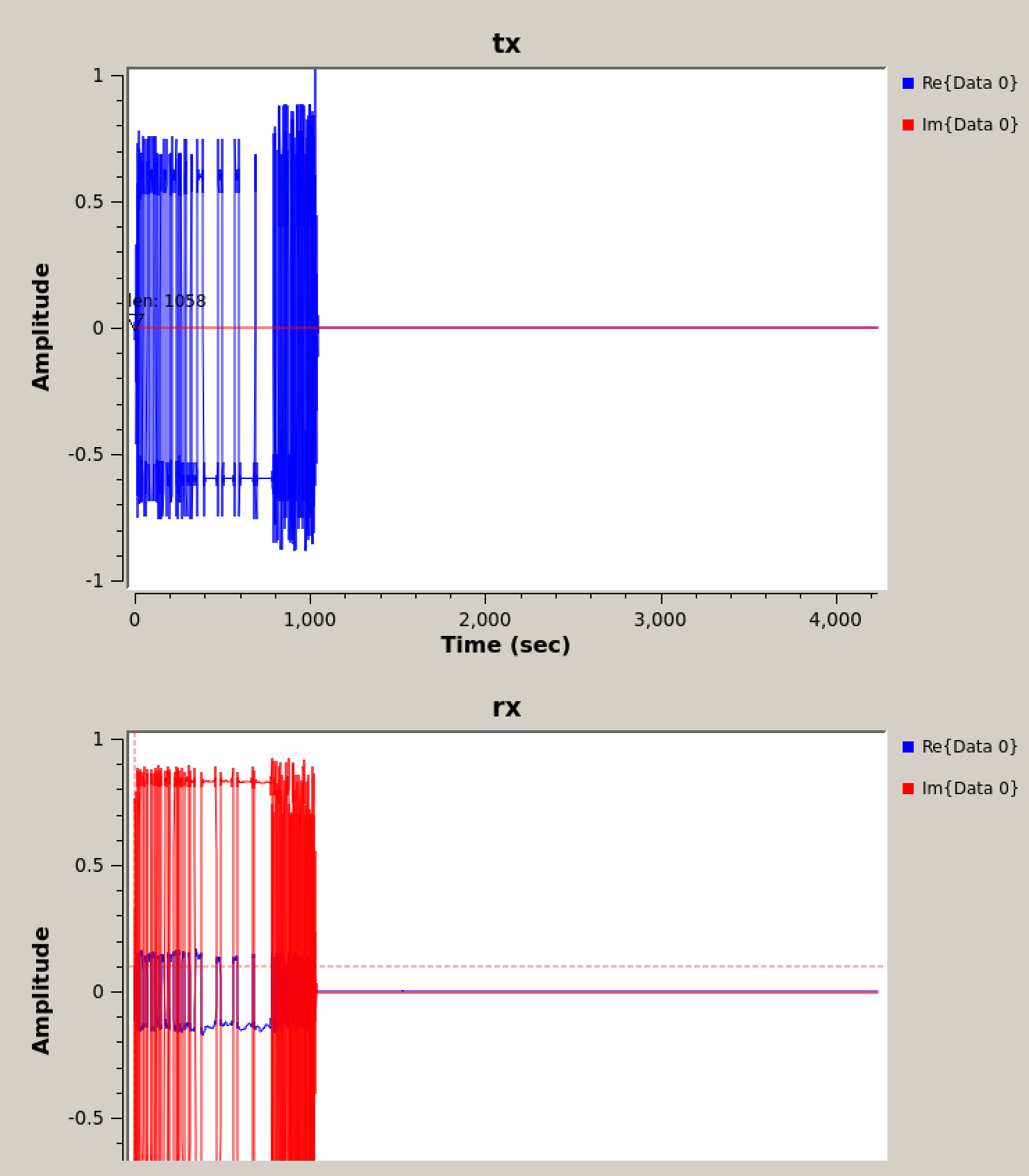I've copied both the gnuradio and usrp lists, since I'm not sure if the question has a software or hardware answer, so I apologize for duplicate emails.
I am attempting to set up a wireless transceiver using N310s and the packet tx/rx examples from gnuradio. I combined both the tx and rx chains in one flowgraph with zeromq source/sink blocks like this:
[zmq source] -> [packet tx] -> [usrp sink]
and
[usrp source] -> [packet rx] -> [zmq sink]
I have a separate python file running in a separate process. That handles messages from the zmq blocks and controls state changes between "backoff", "listen" and "talk"
I'm not sure the specific terminology for the variety of duplex I'm trying to implement, but I want the TX and RX to happen on the same frequency using one antenna. The problem is that if I use the same frequency, my RX chain immediately "hears" the signal that was transmitted. By "hears" I mean that the first part of the [packet rx] block, which is the [correlation estimator] block detects the signal as a valid packet. The problem is that because the amplitude of my desired rx signal is low, I've had to set the threshold of the correlation estimator relatively low--and so the recently transmitted signal, which has a much higher amplitude being right next to the rx antenna, overwhelms the detector. This doesn't happen if I have the TX and RX on different frequencies
What I don't quite fully understand is what happens on the N310 when a flow graph with both transmit and receive processes are active. I can see from the LEDs that it is "receiving" most of the time and when it gets a message to transmit it will blink to tx and then back. What happens in this process? One thought is that since its the same antenna, the tx and rx might share a buffer and the tx data is still present there.
Is what I'm trying to do even possible?
Thanks for your time,
Cameron
